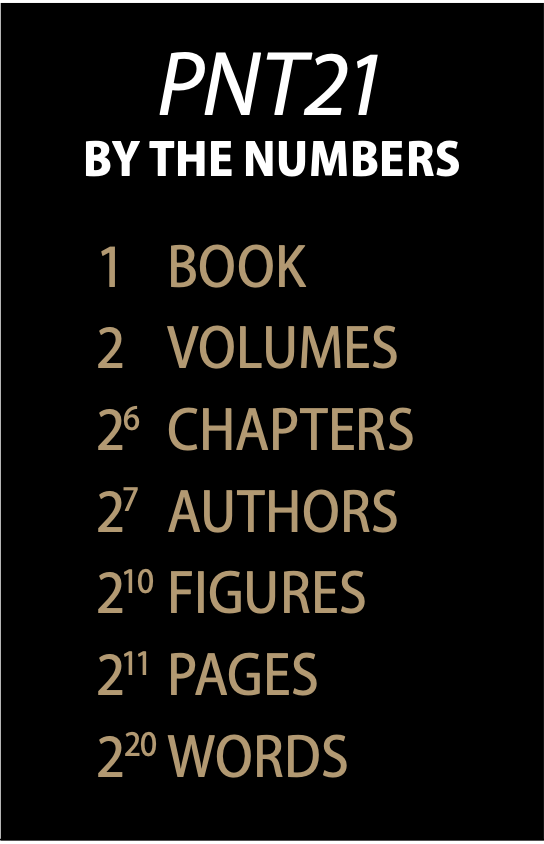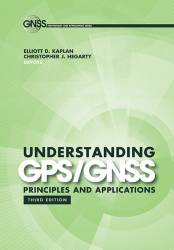A new tome — make that two new tomes — join the bookshelf of essential, authoritative references for GNSS users. They widen the information umbrella significantly to cover all PNT technologies, their sensors, integrations and applications. Edited by four leading lights of the community and assistant-edited by two more, its list of authors rounds up another 100+ of the names seen repeatedly in presentations at technical conferences. In every one of 64 subject matters, the author(s) is/are recognized experts, in many cases the recognized expert, on the material.
Position, Navigation, and Timing Technologies in the 21st Century: Integrated Satellite Navigation, Sensor Systems, and Civil Applications, Volumes 1 and 2 has appeared from John Wiley & Sons (Wiley-IEEE Press). Its 64 chapters in 2,000 pages neatly fall into 6 divisions:
- Satellite Navigation Systems
- SatNav Technologies
- SatNav for Engineering and Scientific Applications
- Position, Navigation, and Timing Using Radio Signals-of-Opportunity
- PNT Using Non-Radio Signals-of-Opportunity
- PNT for Consumer and Commercial Applications
The four lead editors are Y. Jade Morton, University of Colorado at Boulder and past president of the Institute of Navigation; Frank van Diggelen, Google and current president of ION; James J. Spilker, formerly of Stanford; and Bradford W. Parkinson, Stanford, chief architect for GPS and the first Director of the GPS Joint Program Office. Assistant editors are Sherman Lo and Grace Gao, both of Stanford.
The book was Spilker’s brainchild, according to his co-workers. “He remained a fervent supporter until his passing in October 2019. A pioneer of GPS civil signal structure and receiver technologies, Dr. Spilker was truly the inspiration behind this effort.”
In recounting early GPS history, Parkinson told of studies to select the best passive ranging technique for the signal. Experts Fran Natali, Jim Spilker and Charles Cahn concluded that the best one was a variation of a new (in the late 1960s) communications modulation known as code division multiple access (CDMA). Cahn advocated a C/A code length of 2047 chips, while Spilker wanted 511. Parkinson split the difference, giving the code length of 1023 that the world enjoys today.
Parkinson and Spilker edited the first giant reference on global satnav, the venerated “blue books,” Global Positioning System: Theory and Application, also two volumes, appearing in 1996. “We perceived the need for [the new] book at least 8 or 10 years ago,” Parkinson said last month. “The blue books were the bestselling in the history of the AIAA publishing world, but they were long in the tooth. They were never designed to be a regular teaching book, instead to be supplemental, specific, focused on a broad range of topics that related to PNT and the engineering and everything that went with it.
“A large number of suggestions had been made that it was time, but it was such an effort, such a huge effort. Jim Spilker and I were able to taper a bit after finding able editors in Jade and Frank.
“Jade deliberately steered the books in a broader way than the original blue books. We hope they will reach a wider audience, because it’s more than satellites. Satellites are a means to an end.”
He recalled again his old friend and colleague. “Jim had that powerful motivation, Jim was a major catalyst, an incentive for redoing it. If you go through it you’ll see his fine hand, his obvious hand in many chapters. He provided some very valuable edits on my first chapter. We miss Jim, he was always a driving force to do the right thing. This book is in part a tribute to him as well as the other editors.”
Parkinson will never give up his crusade to protect, toughen and augment GPS (his “soapbox du jour, or du year, or du decade”), so that’s where much of the rest of our conversation tended.
He turned at the end to honor his fellow editors. “In the beginning, the editors were going to be listed as Spilker, Parkinson, Morton and van Diggelen. Then I said no, no, that’s not right. Jade’s going to do most of the work, the lead editor should get the credit, and I for one will not resent at all being slid down the list. That’s what we did. More than anything else it reflects what you said: the new guard is here. The king is dead, long live the king, the crown princess and prince, recognizing them in the sequence is the right thing to do.”
A unique feature of the set is its mixed styles: high-level reviews, surveys of recent progress in certain areas, a full 1⁄3 of each volume on applications, and chapters on “fundamental technologies that will never go out of style,” said Morton.
“Even though GNSS/PNT is a relatively mature field, there’s a lack of in-depth, hands-on tutorials on very critical, foundational technologies.
“For example, we originally planned for Chapter 14 to be an overview of GNSS receivers. However, GNSS signal tracking is a topic that students and beginning engineers find challenging to master. So we added 15, GNSS Signal Tracking, as a tutorial.” The same approach went for Robust Positioning in the Presence of Multipath and NLOS GNSS Signals, Non-linear Recursive Estimation, and GNSS-INS Integration.
“We have a website with sample codes and test data,” she emphasized several times. It’s not just a book, it is keyed to a vast online reference.
During the 5-1/2 years of writing, editing and assembly, Morton kept beating the drum, sending authors email reminders and revisions by the thousands. “People started hiding from me at conferences. I once heard someone say there are a couple of authors hiding in the men’s room to avoid me. This went on for several years. Right before ION GNSS+, I would receive a lot of emails with updates.
“We’re just human, you know.”
Van Diggelen enthused further about “the meta-chapter, the web page, pnt21book.com,” which is, let us say, so very 21st century.
“It’s interactive, you can talk to us, provide feedback to the authors, and leave an email address if you want a reply. The web page provides things not so easy to do in print, like high-res figures, two for each chapter. Some have solved homework problems for the classroom.
“In the future there will be errata, we can update when readers spot errors. Software samples and data samples that you can download as well. The authors provide snippets of software so you can regenerate the plots. Or data, for example, in High Sensitivity, an interactive spreadsheet to calculate the gain of a receiver as a function of design parameters, such as integration time. I’m the webmaster,” he concluded proudly.
The last word? “That’s it, man, never doing that again.”
Then two weeks later, “The next book is already being planned!”





